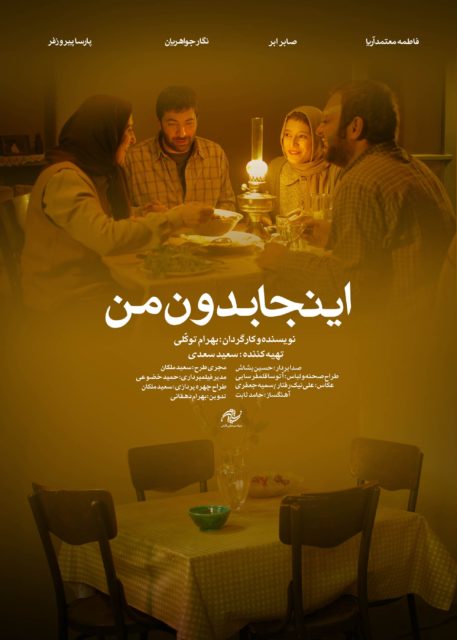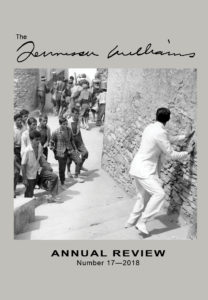Summer 2018
Tennessee, Revisited and Revived
An early version of The Glass Menagerie, a look at Williams in Iranian cinema, and much more with The Historic New Orleans Collection.
Published: June 7, 2018
Last Updated: October 26, 2018
In the introduction to the text, the Review’s editor, R. Barton Palmer, explains that the work belongs to a production genre called a treatment: a presentation of the story that advertises the young writer’s scriptwriting abilities but also wanders into territory normally the responsibility of others (notably, film editors). The document, Palmer writes, is not a proposed script as such. “It was intended to persuade MGM’s studio executives [Williams’s employers at the time] that the young writer should be contracted to produce a full, conventionally detailed version of the submitted sample.”
In the film treatment, Glass Menagerie’s portrait of the missing father comes to life: the young Tom Wingfield known well to Williams audiences opens his “memory play” by describing not his mother and sister in their run-down apartment but the arrival of his own father, the first Tom Wingfield, as a gentleman caller come to Blue Mountain to court Amanda Dabney.
Williams texts have been adapted in three films in Iran and India since 2004, suggesting an increasingly international future for the playwright’s work.
In an essay later in the Review, Naghmeh Rezaie explores Glass Menagerie’s present, unpacking the Iranian director Bahram Tavakoli’s 2011 film Here Without Me, in which a twenty-first-century Tehran family grapples with tensions and cultural pressures similar to those that plagued Williams’s mid-twentieth-century St. Louis family. Rezaie observes that Williams texts have been adapted in three films in Iran and India since 2004, suggesting an increasingly international future for the playwright’s work.

Poster for Here Without Me, Iranian film adaptation of The Glass Menagerie. 2011. Photo courtesy of Naghmeh Rezaie.
Poet Elizabeth Barrett Browning and author D. H. Lawrence make surprising appearances as well in this issue of the journal. Barbara Neri pulls the thread of the cigarette case inscription in A Streetcar Named Desire—a quotation from Barrett Browning’s Sonnets from the Portuguese—to place Blanche in a history of love poetry stretching back to Dante and Petrarch. Henry I. Schvey mines Williams’s oeuvre for references to Lawrence, and in so doing finds Williams using the author of Lady Chatterley’s Lover as a springboard into examinations of the complicated relations among physicality, sexuality, intellect, and instinct.
In a different approach to Williams’s depictions of the physical, Alison Walls follows the trail of Williams martyr figures to document the playwright’s evolving thoughts on the intimate bonds among desire, suffering, and the quest for the divine. R. Barton Palmer concludes the essay section of the journal with part 2 of his exploration (begun in the 2016 issue) of Williams’s underexamined, experimental play Period of Adjustment, which the playwright called a “serious comedy.” In Palmer’s study, the play emerges as an inspired reinvention of Noël Coward’s commercially successful comedy Private Lives, and the genre “serious comedy” reveals itself as, in part, Williams’s response to competing pressures of economics and audience expectations.
A pair of reviews rounds out the issue: Tiffany Gilbert’s examination of three recent scholarly books on Williams follows the playwright through transatlantic encounters and tracks his fearless engagement with culturally and legally risky themes. Finally, Annette J. Saddik offers insightful analysis of the recently staged Grand Guignol: The Brother and Sister Play, an exciting production created by Lee Breuer and Maude Mitchell from the works of Williams and Mary Shelley.
